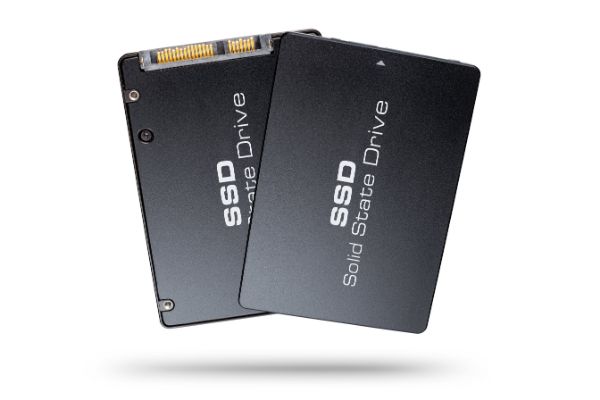Disclaimer: This post may contain affiliate links, meaning we get a small commission if you make a purchase through our links, at no cost to you. For more information, please visit our Disclaimer Page.
An SSD is a great way to store data since it is reliable and safe, meaning that you will not worry about losing your data because of failures of computers. These kinds of devices have been present and used on the market for a long time, and people have been quite satisfied with their convenience.
Unlike HDDs, SSDs have a limited lifespan, meaning that over time they will no longer be usable. When an SSD reaches its life expectancy, it will no longer be able to store new data. Every time the storage drive writes new data, its flash memory deteriorates until it reaches its final point.
When you need to store numerous files, the recommended option would probably be a traditional hard disk. It is true that an HDD is the most reliable drive for storing information, but it depends on a magnetic plate to store data, which some people do not find really convenient.
The thing is that a hard disk is perfect for storing large files that do not need to be accessed so frequently. On the other hand, SSDs are great when you need to store data that you often need. Because SSDs do not contain movable parts, they are considered convenient storage devices.
In fact, an SSD contains only some storage chips along with an electronic controller. While this makes this storage device practical, it also makes it subjected to a limited lifespan. However, because of the included chips, SSDs are significantly faster than HDDs, meaning you can quickly access data.
This means that SSDs are convenient in business mostly. Therefore, if you look for something that will be easily and quickly accessible, then your best option would be an SSD. However, you should take into consideration that these kinds of devices have a particular lifespan.
This is not a strange thing for electronic devices since they are designed to last for a certain period of time. Therefore, an SSD with a particular life expectancy is not surprising. Nonetheless, it is important to know how long will you use them before you purchase one.
While this is not the case with hard disks, SSDs have a particular point of their performance when they will cease to work properly. Actually, they will be able to read the already written data, but it will not be possible to store new information. That will mean that your SSD is no longer usable.
However, even though SSDs have a limited lifespan, their limits are quite long. Usually, the life expectancy of a regular SSD is around 10 years, although sometimes, it can be even more than that. Luckily, you can always check the health of your SSD because there are programs that enable you to do so.
It is actually recommended that you regularly check the lifespan of your SSD because you do not want to end up with lost data, especially if it is important. Therefore, you can use a SMART analysis tool to check the current status of your storage device.
Table of Contents
Why Does An SSD Have Limited Writes?
Because an SSD operates with storage chips and not magnetic disks, it is bound to have limited writes. The number of write/ erase cycles that are allowed before its resulting in producing errors or an absolute failure of the device measures the functionality of an SSD.
To understand these cycles, you have to get to know the structure of this kind of storage device. Namely, an SSD is made of NAND flash, which are the calculations on which the NAND write cycles depend. Once your SSD reaches the limited write/ erase cycles, it will no longer be usable.
How Many Writes Can An SSD Take?
There are different kinds of SSDs, meaning that they can take a different number of writes. Usually, when you want to pick an SSD, you are looking at three main types: SLC, MLC, and TLC. All of these have a different number of possible writes, so you will need to see what is suitable for your needs.
- Single-level cell NAND flash (SLC) can take from 50,000 to 100,000 writes.
- Multi-level cell NAND flash (MLC) can take up to 3,000 writes.
- Triple-level cell NAND flash (TLC) can take from 300 to 1,000 writes.
What Are Good Read And Write Speeds For An SSD?
Determining the read and write speed of an SSD might be quite confusing, especially for those who are not really familiar with the structure of this kind of storage device. An ordinary SSD operates between 200 MB/s and 550 MB/s read/ write speeds.
This is desired speed because it enables an SSD to operate more quickly than an HDD. That is why for speeds, SSDs and HDDs cannot be compared.
How Important Is SSD Speed?
Depending on the way you use an SSD, you will know what kind of speed you need. For instance, if you use your SSD on a regular computer, then even low speed will be practical for you. However, if you use it on other devices, then you might need something that is characterized by better speed.
Nonetheless, you should know that the read/ write speed determines the price of your SSD. Therefore, if you want something that will give you the quickest access to your files, you would need to opt for an expensive storage device.
In other words, SSD speed is important if you need quick access to your files. Otherwise, you can get away with a lower-speed device.
What Happens To SSD After Write Limit?
Since we have established that an SSD comes with a particular life expectancy, you should get familiar with the things that will happen once the device reaches its write limit. So, once this happens, your storage device can no longer remember new data that you try to import.
This means that your old data will be readable, but you cannot “write” new information. However, you should also be prepared that it can come to complete failure. So, what will happen if your SSD resorts to complete failure?
Not having access to your data and files can be quite catastrophic, especially if the information that you have stored is of crucial importance, i.e. irreplaceable. Therefore, the wisest thing you can do if this happens is to contact the manufacturer of your storage device.
Namely, usually, the companies that design these devices have professional support that might help you in cases like these. If a physical fault is in question, then the user will not have the option to repair the device themselves. An attempt to do something like this will only worsen the situation.
If the user tries to repair the storage device themselves, then it might lead to permanent data loss. If something like this happens, even a professional could not recover the information previously stored on the SSD. That is why it is recommended that you always seek professional help.
In addition, it should be noted that even if the SSDs come with a long lifespan, recovering data is quite more challenging compared to HDDs. This means that the convenience of the SSD comes with certain disadvantages, so you should choose wisely with storage devices.
References
https://techmonitor.ai/techonology/data-centre/how-long-do-ssds-really-last
https://www.ontrack.com/en-us/blog/how-long-do-ssds-really-last
https://www.enterprisestorageforum.com/hardware/ssd-lifespan-how-long-will-your-ssd-work/
https://tekie.com/blog/hardware/ssd-vs-hdd-speed-lifespan-and-reliability/


